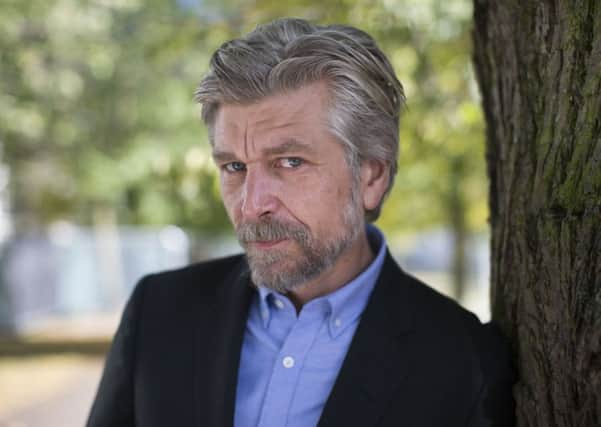Stuart Kelly: Knausgaard's latest work opens a can of worms


Anyone who has read the books which comprise My Struggle will realise that Knausgaard is literature’s chief narcissist; but this takes it to a whole new level.
The conceit – a word with a double meaning if ever there was one – is daily ramblings addressed to his yet-to-be-born daughter. “These astounding things,” he writes, “which you will soon encounter and see for yourself, are so easy to lose sight of, and there are almost as many ways of doing that as there are people. That is why I am writing this book for you. I want to show you the world, as it is, all around us, all the time. Only by doing so will I myself be able to glimpse it”.
Advertisement
Hide AdAdvertisement
Hide AdLet’s begin with inelegance. How can you show something you yourself claim to be unable to glimpse? Why is the almost in that sentence: do some people have identical ways of losing sight of the astounding things? The clutter of commas, the redundant clauses are all the textual equivalent of nails scratched on a blackboard. But it gets worse. These “astonishing things” include fingers, toilet bowls, piss, frogs, chimneys, silence, ambulances and Flaubert. Knausgaard seems to be honing the art of the banal – an act, I suspect, as if he wants to be the Forrest Gump of writing.
Examples speak loudest. “Every single day since I was born the sun has been there, but somehow I’ve never quite got used to it, perhaps because it is so unlike everything else we know.” (Jellyfish will later be as extraordinary). Or: “Tin cans are made of metal and are usually shaped like a cylinder, a form not found in nature, not even on a pebble beach, where the ocean over the course of millions of years has ground the stones against each other into every conceivable variation of spheres and cones without ever having produced the regular shape of the can, with a flat circle at each end connected by a tube”. Leaving aside he will later describe the human body as “cylindrical” (it’s not), or that “every conceivable variation” of a sphere is, um, a sphere, the affectless, monotone spelling out of things is derogatory. I know what shape a tin can is, and that it is customarily made from metal. It reminded me of nothing more that the Arte Povera provocateur Piero Manzoni, who filled cans with his own excrement.
But, says the more benign critic, isn’t it all supposed to be for his unborn daughter? Well, if it is, the psychiatrists in Oslo are going to have a field day when she eventually reads it. The chapter “Mouth” is bad enough: “The outermost part of the mouth is made up of the lips, two relatively long and narrow pads which lie horizontally against each other on the forward-facing side of the head, in the lower part of the face, below the nose.” Really? I’d never noticed that before. He then moves on to a dire simile between the mouth and the anus (the word moist is used with uncomfortable frequency). Later in the book, he writes a whole section on the genital labia and a paean to the beauty of vomit.
These reams of jejune description are made a hundred-fold worse by the amount of cod-philosophy and pseudo-thinking. At one point he confesses he couldn’t make head nor tail of Heidegger or Sontag, and felt – sniff – a bit inferior because of it. His own thinking is a kind of sententious pabulum, things that even Mitch Albom and Paulo Coelho might blush at penning. There are porpoises which are “as if they are touching you, and as if you have thereby been chosen”. The final essay, on eyes, ends with: “For it isn’t the pupils you are seeing then, not the irises or the white of the eyes. It is the soul, the archaic light of the soul the eyes are filled with…” – I will spare you the rest, but thankfully the chapter on vomit was already over. When he isn’t being sententious and pretentious, he is merely obvious. Grass, we are told repeatedly, is green; skies are blue; night is dark. When he strays into other topics, he is, as physicists say, not even wrong. A chapter on badgers asserts they have no cultural significance: news to readers of Wind In The Willows or Mr Badger To The Rescue or Grandville.
In case I have not been clear, I shall spell this out. This book is complete and utter bilge, drivel, tripe, poppycock, hooey, baloney and bunkum.
Karl Ove Knausgaard will be at the Edinburgh International Book Festival on Wednesday at 5pm.